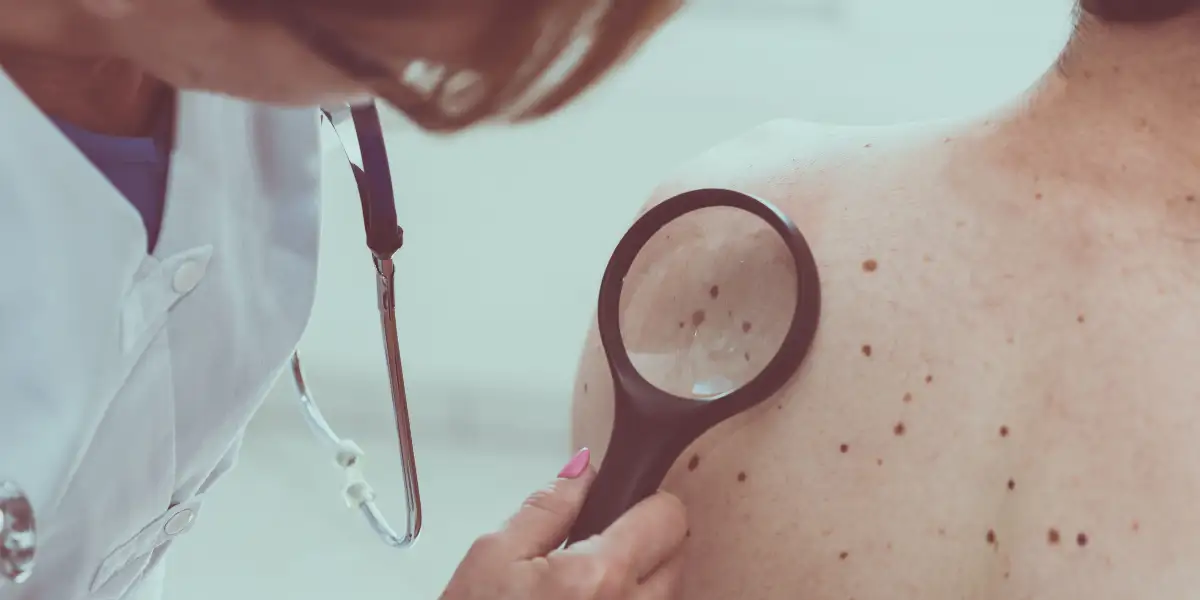Melanoma is one of the most-searched words online in the UK today. This is because of the announcement by the Duchess of York, Sarah Ferguson, about her skin cancer. Following her mastectomy in June, the 64-year old former wife of Prince Andrew underwent reconstructive surgery to remove several moles. One turned out to be malignant later on.
Because of her condition, Sarah asked her supporters to ‘be attentive’ and inspect their moles. After receiving a diagnosis of malignant melanoma, she also emphasised that this is the sixth most common disease in the UK. In this article, we will discuss more about Melanoma, and see how to avoid this skin condition.
Table of Contents
What is Malignant Melanoma?
Every year, about 16,000 British people receive a melanoma diagnosis. Malignant melanoma is a type of skin cancer that starts in the melanocytes, which are cells in the skin’s outermost layer and create the melanin that gives skin its colour. It is less common than other forms of skin cancer, but because it can spread to other organs more quickly if left untreated, it is more dangerous.
Signs and Symptoms of Melanoma?
A newly developed mole or a mole that has changed could be strong indicators of melanoma. Although melanomas can develop anywhere on the body, they tend to occur more frequently in places that are frequently exposed to sunlight. Rarer varieties may impact the genitalia, palms of the hands, soles of the feet, or eyes.
UV radiation is the most common cause of melanoma. While is more common among the elderly, melanoma can sometimes strike younger people. Melanoma risk is further increased if you have pale skin that is prone to sunburn, red or blonde hair, green or blue eyes, an abundance of moles or freckles, sun exposure and sunburn history. Even the likelihood of developing melanoma is reduced in those with dark or brown skin, it is still possible.
GPs in the UK recommend to examine your skin for any strange alterations you may notice. Specifically, search for moles with asymmetrical edges or shapes, moles with a variety of hues, large moles (more than 6mm wide), and moles that gradually shift in size, form, or colour.
How to Spot Melanoma using ABCDE
1. Assymetrical
This has to do with your mole’s symmetry. An early indicator of a melanoma may be found by searching for moles having an uneven or irregular shape. This is because melanomas frequently lack symmetry, in contrast to typical moles, which are typically spherical and have smooth edges. They might have uneven edges and two distinct shaped portions, according to the NHS.
2. Border
This is referring to your mole’s edge form. According to Cancer Research UK, melanomas also have an increased propensity for uneven, blurry, or jagged edges. Common moles, in contrast, “usually have a clear, smooth-edged border.” The most prevalent location for melanomas in men is the back, while the most common location in women is the legs.
3. Colour
This has to do with the colour and shade of your mole. Melanomas can have a variety of colours, ranging from a brown and black combination to red, pink, white, or even blue. Normal moles, on the other hand, are typically just brown tints. Melanomas, which are pink and red but not brown, can occur in certain persons with fair skin or hair. In contrast to other forms of melanoma, this one is uncommon and is known as amelanotic melanoma.
4. Dimensions
This pertains to the size and width of your mole. Typically, moles are no bigger than the tip of a pencil. However, a melanoma may be present if you see a mole that is wider than 6 mm. Individuals who have a large number of moles, particularly some that are larger than 5 mm, are likely to have them there for years and have not changed.
5. Evolving
This alludes to the possible evolution and change of your mole. While benign moles often do not vary in shape over time, melanomas frequently enlarge, alter in shape, and even change in colour. The area may become elevated or take on the shape of a dome. It adds that if the mole is flat, it might remain that way but spread out.
Melanomas can grow bloated and painful in addition to their size and appearance. The NHS says that this may result in them becoming tingling or uncomfortable, bleeding, and looking crusty. According to Cancer Research UK, certain melanomas arise from pre-existing moles and spread to previously normal skin.
How do I treat Melanoma?
Skin cancer from melanoma is often treated. The primary treatment for melanoma is surgery. Chemotherapy, medication, and radiotherapy are also occasionally administered.
Surgery may be necessary to remove the melanoma and any surrounding healthy skin, as well as any swollen lymph nodes that may have developed from the cancer and any other parts of the body it may have spread to. If a significant portion of the skin needs to be removed, a skin transplant may be required, in which the melanoma-affected area is covered with skin obtained from another part of the body.
Moreover, radiotherapy is occasionally used to assist regulate and relieve symptoms, as well as to shrink big melanomas. Immunotherapy and targeted medications are used to treat melanomas that have spread to lymph glands or other body parts or cannot be treated surgically.
When metastatic melanoma spreads to another area of the body, chemotherapy—which destroys cancer cells—is occasionally used to treat it. Although it is not as effective as other therapies, you can use it in the event that you cannot receive them.
How do I prevent Melanoma?
The best defence against skin cancer is to avoid direct sun exposure (melanoma and non-melanoma). We highly suggest you to avoid the sun from 11 a.m. to 3 p.m. – during the hottest portion of the day.
You can also wear a wide-brimmed hat, sunglasses, and clothing that protects your arms and legs from ultraviolet (UV) radiation when going out. Also, make sure you reapply sunscreen on a frequent basis and use one with a minimum 4-star UVA protection and a sun protection factor (SPF) of at least 30. Learn more about how to take care of skin here.

